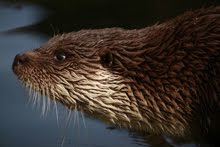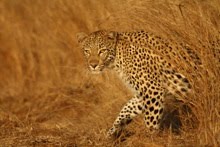Joan of SAPhotographs is a massive fan of cheetahs, so it wasnt that hard to get her to agree to write a guest post here on Alpine Birds about these incredible animals. To accompany her words, I have added some of my favourite cheetah digiscoping photos. If you like these photos, you might like some of the other digiscoping African wildlife posts.
Cheetahs have been kept in captivity for some 5,000 years and were favoured by the early Egyptian Pharaohs and Queens. It is the only one of all the wild cats who become properly domestic and never turn on their owners.


The average life span in captivity is 10-12 years though cheetahs can live as long as 20 years. In the wild, few survive more than 8 years though they can live up to 10 or 12 years. Cub mortality is extremely high for the species in both the wild and captivity. They are most vulnerable from 6 weeks to 4 months and in open habitat like the Serengeti plains, less than 5% reach adulthood. Predation by lions and hyenas accounts for over 70% of mortality.
Cheetahs prefer savanna and arid, open grasslands with available bushland (to hide when stalking prey) for their habitat. They prey on all sorts of mammals including gazelles, impala, wildebeest, and antelopes, and smaller prey such as hares, ground birds, and warthogs. Females prefer a solitary life unless it is mating season, and males prefer to live in groups of two to four, called "coalitions." The female gives birth to one to eight cubs after a gestation period of 90 to 95 days. The cubs depend on the mother for about three months and are very vulnerable to predators like lions and hyenas.


In 1900, there were over 100,000 cheetahs across their historic range. Today, an estimated 9,000 to 12,000 cheetahs remain in the wild in Africa. In the early 1970’s they were listed on CITES as an endangered species however due to huge conservations efforts and breeding programs, the species have now recovered.
Thank you Joan!
Dale











.jpg)








.jpg)



7 comments:
This is FANTASTIC Dale!! These pictures are stunning!!
Thank you so much for asking me to do this post with you. It has been a pleasure.
I am going to put a link to it on my page.
Hi Dale,
Her nice text and explanation, illustrated by your disgiscop shots gave one of my blog favorite story so far. This is just gorgeous, congratulation to both of you and thank you very much to share it with us. Have a nice week end.
Hi! These are amazing photos of the cheetah. Even though I live in South Africa, I've never really seen one up close. Is this a cub that you have captured? It is so cute! I enjoyed visiting your blog :)
What a beautiful portrait in words and images. They are fascinating cats indeed.
That was a great post, you two!Very informative and amazing pics!
Great close-up pictures, Dale!.
A great combination effort.
Post a Comment